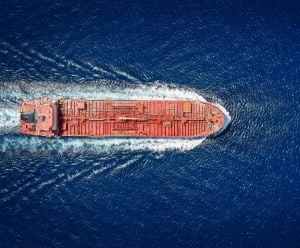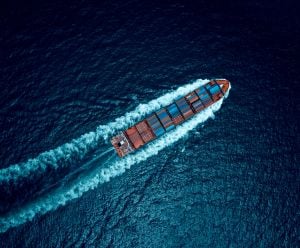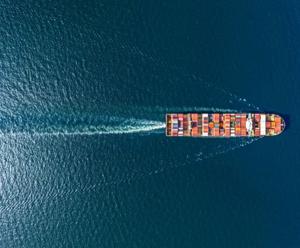
2025: The year of whiplash for container shipping

2025 may be the year of the snake in the Chinese zodiac, but for the shipping industry, it is shaping up to be the year of whiplash.
Supply chains are reeling from rapid, unpredictable policy shifts from the White House in the early days of Donald Trump’s second presidency. While tariff threats and impositions dominate headlines, the real challenge lies in deciphering the impact as announcements have been followed by abrupt reversals.
Take the 25 percent tariffs on imports from Mexico and Canada—initially imposed, then suspended for 30 days after stock market turmoil and U.S. wins on border control concessions. But as the clock ticks down, what happens when that 30-day pause expires remains anyone’s guess. The North American economy is deeply intertwined, but certainty is in short supply.
De minimis whiplash
Imports from China were hit with a 10 percent tariff hike, and an executive order suspended the de minimis trade rule for Chinese shipments. This rule, which allows packages under US$800 (€772) to enter the U.S. duty-free, has been a cornerstone of e-commerce growth for Chinese e-tailers.
Yet, chaos ensued. Processing bottlenecks forced the administration to delay the de minimis suspension, pending infrastructure improvements. The ban will only take effect upon notification by the Secretary of Commerce to the President that adequate systems are in place to fully and expediently process and collect tariff revenue.
The challenge? Processing nearly four million parcels daily requires federal investment in infrastructure and staffing—an unlikely move from an administration committed to slashing government size.
Meanwhile, tariffs on EU exports to the U.S. are in the pipeline, and 25 percent levies on all foreign steel and aluminium imports are due to be introduced in March. China has retaliated with its own tariffs on U.S. exports and expanded export controls on critical minerals like bismuth, indium, molybdenum, tellurium, and tungsten.
“Tariff regimes are shifting by the week,” said Niki Frank, CEO of DHL Global Forwarding Asia Pacific. “The pace of change has prompted many shippers to frontload and stockpile goods, sending cargo into the U.S. before policies tighten further. We will also continue to monitor the situation and to work with our customers to help them understand and adapt to any future changes that may come into effect.”
Policy shockwaves
The Trump administration’s commitment to ‘shock and awe’ policymaking extends beyond tariffs. Chinese investments in Panama and strategic ports near the Panama Canal have drawn sharp criticism.
Under U.S. pressure, Panama withdrew from China’s Belt and Road Initiative, a move that could set a precedent for future geopolitical clashes.
Domestically, the bipartisan Shipbuilding and Harbor Infrastructure for Prosperity and Security (SHIPS) for America Act is making headway in Congress. Its goal: revive U.S. shipbuilding and reduce dependency on Chinese-built vessels. A key provision mandates that, starting in 2029, 10 percent of commercial goods from China must be transported on U.S.-flagged ships—though how this will affect cargo owners remains unclear.
Suez Canal setbacks
As trade tensions escalate, shipping lines are navigating additional hurdles. Hopes for stable Suez Canal passage in early 2025 have faded amid growing doubts over a ceasefire in Gaza and ongoing threats from Houthi militants in the Red Sea. Insurers continue to flag the region as high-risk.
Even as spot rates dip, global liner capacity remains maxed out. DHL’s February Ocean Freight Market Update reports record capacity levels in 2025, with a 5 percent growth forecast for the year. Yet, the sector is stretched thin, with only 0.2 percent of vessels (just 30 ships) currently idle.
More volatility is expected ahead as liner alliance networks reconfigure, causing some additional service disruption. Bad news for shippers when the latest figures from Sea-Intelligence covering December revealed an almost 1 percent month-on-month decline in global schedule reliability to 53.8 percent.
“With alliance networks shifting and service patterns in flux, volatility is set to be a constant factor,” said Praveen Gregory, Senior Vice President, Ocean Freight, DHL Global Forwarding Asia Pacific. “Shippers must build flexibility into their operations and prepare for disruptions as a routine part of navigating 2025.”
ALSO WORTH READING













 English
English